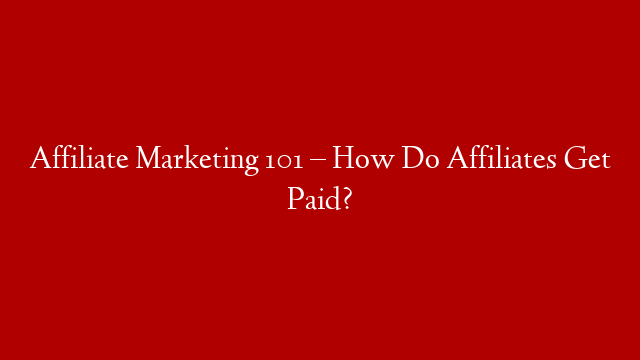There are 4 different compensation models in affiliate marketing: cost-per-sale (CPS), cost-per-action (CPA), cost-per-lead (CPL) and cost-per-click (CPC). CPC is an old model that was commonly used in the 1990’s, but has been largely retired because of issues with tracking and click fraud. However, through the work of Google and Overture (now Yahoo), it has remained as an advertising channel now commonly referred to as pay-per-click (PPC). As an affiliate marketer you may use PPC as a promotion method, but since it is not an affiliate compensation model any longer, we will not discuss it here. CPA and CPL are very similar, and for that purpose we will describe them together as a single compensation method. CPS is the most common method which companies compensate their affiliates, so we will discuss that first.
Cost-per-sale (CPS) is the easiest compensation model to understand. A company pays the affiliate a percentage of the order amount (sale) that occurred when the affiliate referred a customer (usually via a link) to the company’s website. Online retailers, such as Amazon or Newegg, typically use this model. When working with this model, you as the affiliate should weigh the commission percentage with the average sale or item amount. For example, retailers like Amazon typically pay a low commission percentage, around 5%. However, as the largest online retailer, Amazon does offer a very wide range of products, so the low percentage of the sale can be offset by you promoting only high-ticket items. In contrast, products sold through Clickbank, a retailer of digital and informational products, typically offers large commissions (up to 75%) on products sold through them. Products here tend to vary greatly in price, but with such large commission margins, a product that sells for as little as $5 could be worth your while to promote, provided that you can generate a large volume of sales.
Cost-per-action (CPA) and cost-per-lead (CPL) is when a company pays you a flat commission if a referred visitor performs a specific action on their site. This action could be anything from filling out a form, joining a mailing list or creating an account on their website. These compensation methods are often popular with credit card companies, insurance providers, loan and mortgage providers, movie and game rental services, music and movie clubs, etc…the list can continue almost indefinitely. This compensation method is very attractive for affiliates largely because these programs convert well; the action that referred leads perform is often free or costs a very small amount. The commission amount varies from program to program, so you may want to test each one you find a bit before you put too many resources into a program that either doesn’t pay well or convert enough.



